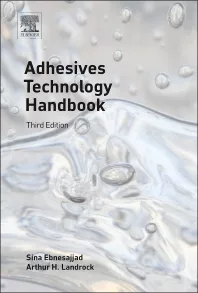Adhesive for Vacuum-Infused Fiberglass Products

Results
from tests conducted by a leading independent university composites testing lab
indicated that the vacuum-infusion-enabling adhesive provided a stronger bond
in the vacuum-infusion process than the leading general-purpose spray adhesive.
Adhesive is used in the process to temporarily hold dry materials laid into a mold until they’re enclosed in a vacuum bag and resin is injected. This is especially important on vertical or tight radius work, where dry materials are prone to slip or move.
However, when general-purpose spray adhesive is used to hold the layers of dry material together, it may act as a contaminant that can ultimately compromise the structural integrity of the part and lead to premature failure in the field.
In addition, general-purpose spray adhesives can interfere with the resin curing process; they can even inhibit resin flow if applied too thickly or unevenly, causing the resin to part around that area like a rock in a stream of water. When this occurs, air pockets, bubbles of resin or osmotic blisters can form within the structure of the fiberglass, making delamination or structural failure more likely.

As
a high-strength, high-temperature solvent-based vacuum infusion enabler for
industrial use, InfuZene is designed to safely fuse laminating materials to
structural core surfaces, forming a continuous matrix without structural
weakness.
In many layered composites, such as yacht hulls or turbine blades, the structural risk can be particularly troublesome if structural weaknesses occur within internal layers and are hidden from view. This could lead to possible catastrophic failure without warning in mission-critical or high-performance applications, such as yacht or car racing.
For design engineers using vacuum infusion for greater quality, consistency and performance than wet/hand lay-up or vacuum bagging offers, it is ironic that general-purpose spray adhesives can potentially negate these qualities.

For
design engineers using vacuum infusion for greater quality, consistency and
performance than wet/hand lay-up or vacuum bagging, it is ironic that
general-purpose spray adhesives can potentially negate these qualities.
The high-strength, high-temperature, solvent-based vacuum infusion enabler is designed to safely fuse laminating materials to structural core surfaces, forming a continuous matrix without structural weakness. Since it will not interfere with the curing process of vinyl esters, polyester or styrene resins, it allows resins to obtain maximum tensile shear strength. The adhesive crosslinks and hardens along with the ester or styrene resins to form an integrated structure.

Because it does not interfere with the curing process of
vinyl esters, polyester or styrene resins, InfuZene allows resins to obtain
maximum tensile shear strength. The adhesive crosslinks and hardens along with
the ester or styrene resins to form an integrated structure.
In the tests, seven plates were tested to failure under three-point bending. The MPa difference was +4.3 for light coverage at 12.5 g/m2 and +7.0 for double coverage at 25 g/m2. The MPa % difference was +18.53% for light coverage and +30.17% for double coverage.
In related tests, control specimens without adhesive failed at an average of 50.2 MPa, while specimens with the vacuum infusion-enabling adhesive failed at an average of 48.2 MPa at 12.5 g/m2, equal to 96% of the control specimens. Though use of enablers in composites typically results in some matrix strength loss, the vacuum infusion-enabling adhesive resulted in significantly less matrix strength loss than the general-purpose adhesive.
In a separate osmotic test by a leading French testing firm, the vacuum infusion-enabling adhesive was tested alongside an adhesive product already in use in the yacht building industry. The report stated that “[Westech Infuzene] shows a superior resistance to osmotic aging compared to product Ref. B, which started blistering after only five days of exposure to a laminar flow of water.”
While the vacuum infusion-enabling adhesive is primarily used for fiberglass, its crosslinking properties with resin also provide greater interlaminar shear strength for carbon fiber (graphite) and Kevlar materials. A canister system with a reusable gun and hose eliminates the need for air-assisted application systems and allows continuous application for large projects when a 13-ounce can is insufficient.
For more information, phone (800) 674-2010, fax (360) 674-2053 or visit www.ok2spray.com.
Links
Looking for a reprint of this article?
From high-res PDFs to custom plaques, order your copy today!



